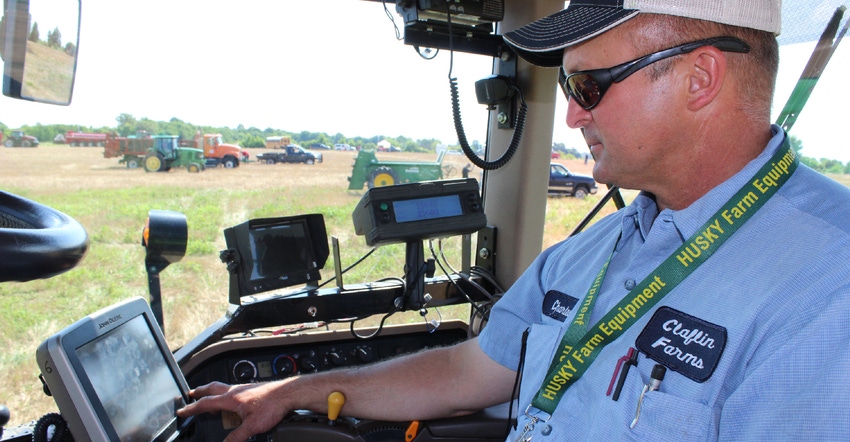
When it comes to a preseason planting checklist, many farmers miss the data management and organization box.
“One of the big mistakes farmers make before even filling the planter is not checking the software in the tractor cab,” says Adam Daugherty, technical communicator with Ziegler Ag Equipment.
Daugherty says farmers need to either look at the manufacturers website or visit their dealer for the latest software upgrades. Most require a USB storage device to upload it from the home computer and then to the monitor in the tractor cab.
“If you’re using a planter that requires a monitor, it is a good idea to have it up to date,” he adds. “A lot of manufacturers update software versions two or three times a year even.”
Deep clean the display
Brad Niensteadt, senior product specialist for Kinze Manufacturing, recommends farmers go one step further before uploading new software and “clean up the display.” He finds farmers leave, at the very least, last year’s data on the in-cab computer, and “some still have up to three years.”
“You are looking at gigabytes of data for the majority of displays,” Niensteadt says. “Depending on the size of the farming operation, a farmer with several thousand acres of planting, harvest and maybe fertilizer application data may have 20,000 acres on that display annually. So now next year, you’ll have 40,000 acres. So, the file starts to get very, very big.”
He notes that like a computer, the tech in the cab gets full and can start to affect performance. “If there’s too much data on it, it starts to slow down processing,” Niensteadt says. Farmers should keep it clean and up to date to avoid confusion or second guessing by the operator from year to year.
Keep information safe
Niensteadt offers four steps every farmer should take to ready the computers in the cab for the growing season:
1. Back it up. Before farmers start altering items on the monitor, they need to create a backup of the data, Niensteadt says. This allows farmers to always have a snapshot in time of their operation. If there are years of storage, make sure you have enough gigabytes on a flash drive. In some cases, farmers may need to purchase an external hard drive with a terabyte of storage.
2. Secure the data. Once a backup of the system is complete, farmers need to place the information in a safe location. It should not be just thrown in the glove box. Consider keeping it in a farm office safe. Keep it out of the elements of extreme cold and heat to protect the data.
3. Update field files. Most data in the computer monitors are broken down by folder — for instance, grower farm and field. Niensteadt says farmers should start here making sure nothing has changed. If there will be new fields farmed this year, this is the time to add those locations. If farmers have done step one, then they can delete those outdated farms.
4. Make product adjustments. After updating individual grower farm and field files, go into those and adjust products, whether it be seed varieties or hybrids, fertilizer and chemicals. “Clean out the ones you’re not going to use anymore,” Niensteadt says. “There is no need to have them in there, and it would prevent you from selecting the incorrect product.”
Niensteadt says at the end of the growing season, farmers should once again back up their data. “This will make sure that you always have a line in the sand where you were in case something happens," he says. "You can always come back to where you started.”
About the Author(s)
You May Also Like






